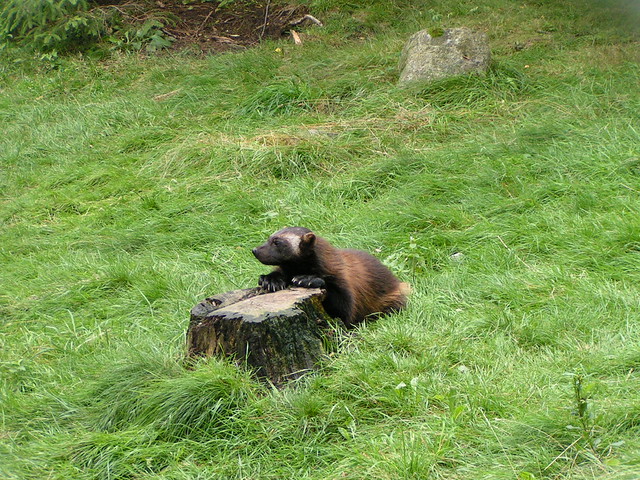One of Marvel Comics' most popular characters, Wolverine, was born with the genetic mutation allowing him to recover rapidly from any injury. Combine that with the Canadian [sic] government's program to replace his skeleton with the indestructible metal adamantium, and you have one tough character. The character's eponymous creature is also one tough critter, one that thrives in frozen mountain habitats and has been reported to scare off grizzlies from their kills. Yet scientists have long been worried about the long term effects of climate change on wolverines (Gulo gulo), and a recent synthesis points to a particular mechanism: the loss of the wolverine's "refrigerator."
Specifically, a recent paper in the Journal of Mammalogy describes the "refrigerator-zone" hypothesis, which provides a "food-based explanation for the correlation between wolverine distribution and persistent spring snow cover." In short, wolverine parturition occurs relatively early in the year in order to take advantage of food caches that the wolverines have stored in the snow. This strategy protects these critical food resources from "insects, bacteria, and other scavengers." While the authors are careful to point to uncertainties over the wolverine's ability to turn to a diversity of food resources, they emphasize that caching appears to be an "important behavioral adaptation." With climate change threatening to change precipitation patterns in the wolverine's mountain habitat, the refrigerator's future as a functioning appliance is in doubt.
Wolverines have inhabited cold northern environments in both the old and new worlds, and they can be found in at least four of the geographic case studies in Climate and Conservation: Landscape and Seascape Science, Planning and Action. Examining a total of 19 geographic case studies around the world, the volume highlights the critical importance of connectivity in responding to the threat of climate change. The book's five chapters on montane landscapes looks at several other mountain mammals--or species that have become de facto "mountain mammals"--that are likely to be affected by climate change, including the American pika (Ochotona princeps), the snow leopard (Uncia uncia), and argali sheep (Ovis ammon). Mostly, however, these chapters focus on the vegetation and climatic conditions that form the varied habitats for these mammals. In each case, conservationists and scientists are asking the fundamental question: What do current and projected changes in climate mean for our long-term conservation strategy?
Charles C. Chester teaches global environmental politics at Brandeis University and the Fletcher School at Tufts University, where he is an adjunct assistant professor of international environmental policy. He is the author of Conservation Across Borders: Biodiversity in an Interdependent World and co-author of Climate and Conservation: Landscape and Seascape Science, Planning, and Action.



